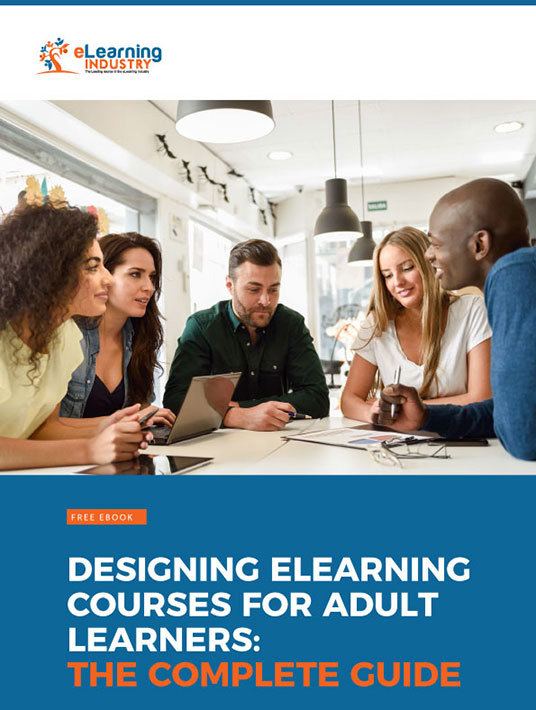How To Create Engaging And Inspiring Adult Learning Courses: 8 Points To Consider
Creating adult learning courses gives more mature learners the opportunity to expand their skills and build vital knowledge even if they are short on time and hesitant to hop on board the IT bandwagon. eLearning allows them to unlock new opportunities at their own pace and access online training resources whenever it's most convenient. Here are 8 tips to help you develop successful eLearning courses for adult learners that are motivational and memorable.

1. Research Your Audience
Not knowing your audience could have disastrous consequences. Thus, it's wise to do some research before you start the development process. Valuable information can be gained from numerous sources, including interviews, online surveys and focus group testing. In fact, you may want to utilize numerous analysis methods to delve into the background and experience of your adult learners. When researching your target audience, make sure you have a good understanding of their expectations. You must address the needs, goals, and preferences of your adult learning audience in order to offer them real value.
2. Jot Down Your Objectives
Once you have clarified who your target audience is, you need to define the purpose of the eLearning course. A good starting point is to write down your goals and objectives. Is it your goal to provide your online learners with practical skills? Do you want to provide task-based training? Or do you wish to provide advanced learning to professionals with prior experience? Once you have your goals and objectives narrowed down, and the target audience you are addressing to, you can make decisions about the eLearning content to be included, as well as the format.
3. Research The Requirements
You have to ensure that your eLearning course meets your organizational requirements and prerequisites. For example, you want to deliver an adult learning course that leads to an online training certificate. Thus, you must research the online training certification requirements beforehand. That includes the subject matter, skill requirements, related tasks, and even compliance standards. You can also ask for input from prospective adult learners and possibly other online instructors in the same field.
4. Select The Right eLearning Authoring Tool
The right eLearning authoring tool can help make or break your adult learning course. Before you select an eLearning authoring tool, evaluate your eLearning team and compare their skills to the available options. If you have a team with minimal programming experience for example, it is best to choose an eLearning authoring tool with more basic functions and pre-made eLearning templates. If your eLearning team is a little more skilled, you can opt for a more advanced, feature-rich eLearning authoring tool.
5. Make The Most Of Cloud-Based Online Training Resources
Having the ability to exchange information is a crucial part of the eLearning experience. Thus, a cloud-based Learning Management System could be ideal for your adult learning course. You don’t even need in-depth knowledge about cloud systems. As there are numerous user-friendly options that allow you to design, develop, and deploy your eLearning course with ease. Of course, the cloud program you choose should match your needs and those of your audience. A simple and straightforward User Interface, for example, is best for adult learners who are new to the world of tech tools.
6. Tap Into The Power Of Multimedia
Multimedia can be used to keep your audience engaged and entertained simultaneously. Naturally, the multimedia sources you use must tie into the subject matter. During the creation of your eLearning course, take time to browse the internet for relevant links, articles, and images. You could even search for a video sharing online platform, such as YouTube. The use of multimedia also makes your eLearning course look more polished and professional. Not to mention, enhances knowledge retention and recall for your adult learners. Rapid eLearning authoring tools are yet another source of rich multimedia due to the fact that they usually have built-in eLearning templates, images, audio, and layouts.
7. Keep It Simple
When there is so much multimedia available on the internet, it is too easy to consume too much of it. An overabundance of images and graphics in your eLearning course may cause confusion or cognitive overload, which diminishes the value of your eLearning course design. Be wary of chaotic design elements when you do the final edits and opt for a simplified layout. You can also submit the eLearning course to a focus group for evaluation. Afterwards, you're able to do some fine tuning and avoid common errors, such as lengthy blocks of texts and cluttered presentations.
8. Encourage Active Learning
One of the most powerful ways to engage and inspire your adult learners is to incorporate real world activities. Encourage your adult learners to conduct online interviews with experienced professionals in the field, or include branching scenarios and simulations to facilitate real world application. You can also keep your adult learners engaged by giving them continuous updates on social media and other online platforms. The key is to keep them actively involved in the learning process. Another option is to create group collaborative assignments that center on realistic problems or situations. For example, creating an online tip sheet to help their peers improve task performance.
Adult learning courses give adult learners the information and online training resources they need to achieve their learning objectives. Best of all, they have the power to train whenever it fits into their busy schedule. This helps to enhance their motivation and keep them focused on the desired outcome, instead of letting other obligations get in the way of their personal and professional development. Design memorable eLearning courses that cater to the individual needs of adult learners and make the most of eLearning authoring tools.
Are you interested in learning more about how to create eLearning courses for adult learners? Download our free eBook Designing eLearning Courses For Adult Learners: The Complete Guide to learn about the characteristics of adult learners, what motivates them, the most appropriate Instructional Design models and theories for adult learners, as well as additional facts and stats you need to know about this particular audience.

